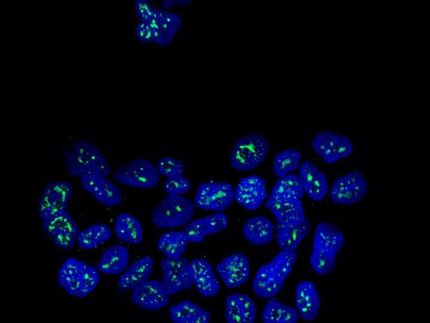Latino genomes reflect migrations
Study: Latino genomes are exceedingly diverse, reflecting history's migrations
The term Hispanic/Latino "encompasses a huge amount of genetic diversity," says a Cornell researcher whose new study shows that populations geographically close to historical slave trade routes and ports have more African ancestry than more distant or inland Latin Americans, who show more Native American influences. The genetics study by researchers from Cornell, the New York University School of Medicine, the University of Arizona and Stanford University, appears in the Proceedings of the National Academy of Sciences.
"The study reveals unique patterns of ancestry across these populations," said Katarzyna Bryc, graduate student in biological statistics and computational biology and co-lead author of the paper with New York University medical student Christopher Velez. The genes of "these Latino populations tell us about the complexity of migration events involved in the histories of Hispanics/Latinos," Bryc added.
The research also found a sex bias in ancestry contributions in the sample of 100 individuals from Ecuador, Colombia, Dominican Republic and Puerto Rico and 112 Mexicans: All of the studied populations show greater proportions of Native American female and European male ancestries.
The findings have implications for using a genomic perspective in medicine, where knowledge of ancestries may reveal tendencies toward chronic inherited diseases. Previous studies have shown that Latinos with greater European ancestry have a higher risk of breast cancer, while European ancestry correlates with higher susceptibility to asthma in Puerto Ricans, compared with Mexicans, for example.
The genetic analysis shows that individuals from the Dominican Republic, Puerto Rico and to some extent Colombia have more African ancestry, reflecting migrations along the historical slave trade routes. In contrast, Mexicans and Ecuadorians have more Native American ancestry.
When compared with eight sampled Native American populations, the researchers also found that the Native American segments of genomes of North American Hispanics/Latinos (from Mexico, Puerto Rico and Dominican Republic) are genetically more similar to those of the Nahua people (indigenous of Mexico and Central America), while the Native American segments of genomes of South American populations (of Colombia and Ecuador) were most similar to those of the Quechua people.
The term Hispanic or Latino encompasses many different countries, hundreds of millions of individuals, and populations that underwent "different rates of migration from Europe and enslavement from Africa," said Velez. "This, in conjunction with the uneven distribution of native populations throughout the Americas prior to the arrival of the Spanish and Portuguese, has led to marked differences not only between countries in Latin America, but also within them," he added.
The researchers used data on 100 individuals from Ecuador, Colombia, Dominican Republic and Puerto Rico from a repository collected for the New York Cancer Project and housed at North Shore-Long Island Jewish Medical Center, and 112 Mexicans from a dataset collected by GlaxoSmithKline for the Population Reference Sample, a resource for population, disease and pharmacological genetics research.
Most read news
Topics
Organizations
Other news from the department science

Get the life science industry in your inbox
By submitting this form you agree that LUMITOS AG will send you the newsletter(s) selected above by email. Your data will not be passed on to third parties. Your data will be stored and processed in accordance with our data protection regulations. LUMITOS may contact you by email for the purpose of advertising or market and opinion surveys. You can revoke your consent at any time without giving reasons to LUMITOS AG, Ernst-Augustin-Str. 2, 12489 Berlin, Germany or by e-mail at revoke@lumitos.com with effect for the future. In addition, each email contains a link to unsubscribe from the corresponding newsletter.






















































